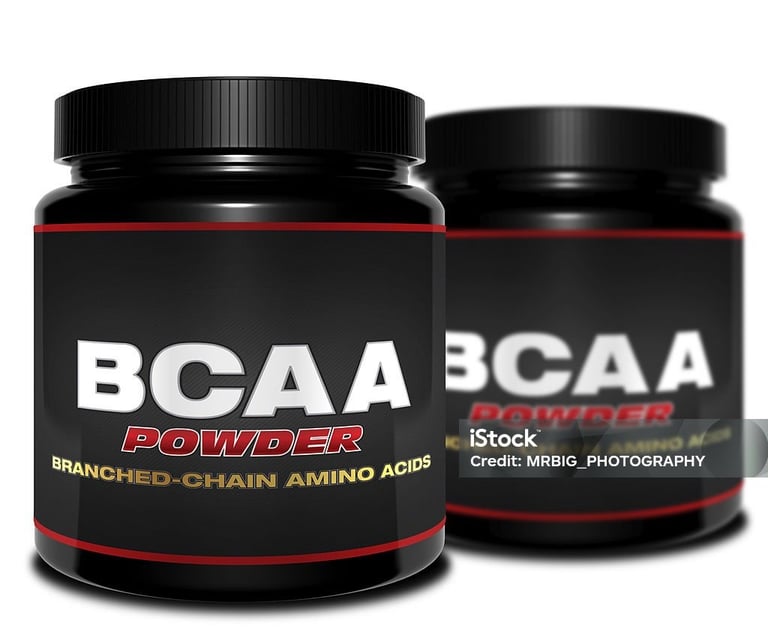Visit Innatefit1.com for exercise wear and equipment!!!
From Fatigue to Function: DOMS Recovery and the Benefits of Essential Amino Acids Explained
Discover how essential amino acids significantly enhance DOMS recovery, providing strategies for superior muscle soreness recovery, inflammation control, and functional progress. Learn professional insights to optimize your athletic performance today.
SELF-HELPWORKOUTSFITNESS TIPSNUTRITION AND RECOVERY
Joseph Battle
6/6/20255 min read


Introduction
Delayed-Onset Muscle Soreness, or DOMS, represents more than just a sign of hard training. It indicates microscopic muscular damage leading to discomfort, stiffness, and reduced performance capabilities. Whether you're a seasoned athlete or new to fitness, DOMS can be a significant barrier to progress.
Fortunately, science has shed considerable light on the most efficient strategies for muscle soreness recovery, revealing the powerful effects of essential amino acids. In this article, we delve deeply into professional approaches to DOMS recovery and explore the benefits of essential amino acids, particularly highlighting the best amino acids for recovery.
By embracing targeted nutritional strategies, we transition from experiencing temporary fatigue to developing lasting functional athleticism. This article contains affiliate links. If you purchase products through these links, I may earn a small commission at no extra cost to you. Thank you for supporting my work!
DOMS Recovery Explained: A Professional Look at Post-Workout Inflammation
Delayed-Onset Muscle Soreness (DOMS) typically sets in between 12 and 48 hours after strenuous exercise, peaking around the second day after the workout. Precisely, DOMS represents microscopic damage to muscle fibers caused by resistance training or unfamiliar eccentric movements.
These micro-tears stimulate an inflammatory response, characterized by swelling, increased blood flow, and localized pain, which is essential for muscle repair and eventual growth. Nevertheless, excessive DOMS can considerably limit athletic performance and recovery efficiency, emphasizing the need for professional strategies to optimize muscle soreness recovery.
Inflammation triggered by DOMS is characterized by the migration of immune cells toward damaged muscle sites, which releases pro-inflammatory mediators. While inflammatory processes promote tissue healing, they also contribute to pain and stiffness.
As a result, recovery strategies often involve methods aimed at controlling excessive inflammation without entirely diminishing its beneficial effects. Because inflammation positively influences muscle repair, striking a careful balance to support rather than hinder recovery remains central to professional training approaches.
Beyond controlling inflammation, optimal DOMS recovery depends significantly on the timing of repair and nutrition. Early intake of protein and essential amino acids following exercise considerably reduces the prolonged discomfort associated with DOMS by accelerating muscle protein synthesis.
Hence, professional trainers often recommend specific nutritional guidelines immediately after training to manage inflammation, minimize muscle damage, and expedite DOMS recovery.
Rebuilding Strength: How Muscle Soreness Recovery Supports Growth Cycles
The journey from muscle breakdown during training to muscle growth begins with efficient DOMS recovery. Adequate muscle soreness recovery not only relieves immediate physical discomfort but also profoundly influences an athlete's entire performance spectrum, energy availability, and growth capacity.
Consequently, mastering DOMS recovery becomes integral to developing one's physical potential and facilitating ongoing improvements in athletic performance.
Targeted muscle soreness recovery facilitates a more effective muscle growth cycle by enhancing muscle protein synthesis—the process of rebuilding and generating new muscle tissue. If muscle proteins degrade faster than they are synthesized, muscle loss rather than growth occurs.
Thus, athletes must engage nutritional or therapeutic approaches that tilt this balance positively toward protein synthesis. Essential amino acids are crucial intermediaries in facilitating increased synthesis rates and preserving muscle integrity, thus supporting sustained growth and recovery cycles.
Furthermore, managing DOMS effectively positively influences neurological and psychological readiness for training. A sore body is a fatigued body; strategies that accelerate DOMS recovery boost recovery perception and athletic confidence, renewing mental freshness and reducing training apprehension. Religiously incorporating amino acid supplementation elevates recovery capabilities, providing greater resilience and enhancing athletes' consistency in training quality and progression.
Choosing the Best Amino Acids for Recovery and Functional Progress
Selecting the best amino acids for recovery demands careful consideration of their physiological roles, efficacy in DOMS recovery, and timing of ingestion. Essential amino acids (EAAs), notably leucine, valine, isoleucine (the Branched-Chain Amino Acids or BCAAs), lysine, methionine, phenylalanine, threonine, tryptophan, and histidine, possess inherent anabolic potential, providing critical building blocks for muscle regeneration. Specifically, leucine demonstrates robust evidence for activating muscle protein synthesis immediately post-training, making it indispensable in any amino acid recovery formula.
Branched-chain amino acids (BCAAs), including leucine, valine, and isoleucine, have gained professional endorsement for preventing muscle breakdown after exercise. These amino acids effectively reduce protein degradation, enhance protein synthesis, and diminish perceived physical fatigue during prolonged or strenuous exercise.
Consuming BCAAs after intense sessions accelerates muscle soreness recovery by reducing the accumulation of muscle damage markers and enhancing the availability of energy substrates, facilitating a quicker progression of functional recovery.
Moreover, specific amino acid combinations are superior in supporting functional progress and reducing DOMS effectively. Combining leucine-rich essential amino acid (EAA) blends with glutamine, citrulline malate, and arginine has gained traction among professional athletes.
These blends not only accelerate recovery but also enhance blood flow and nutrient delivery to recovering muscles, substantially optimizing recovery efficiency. Thus, practitioners advocating DOMS recovery should prioritize selecting amino acid formulations scientifically optimized for athlete-specific recovery and functional development needs.
Essential Amino Acids Benefits Every Athlete Should Know
The benefits of essential amino acids extend beyond merely building new muscle fibers. For athletes, EAAs also positively impact various physiological systems and overall athletic performance parameters.
Studies indicate substantial benefits of EAA supplementation on muscular endurance capability, significantly delaying fatigue onset during strenuous endurance activities. In practical terms, prolonged performance duration empowers athletes to challenge previous performance milestones, facilitating consistency and progression.
A vital consideration is the role of EAAs in sustaining muscle mass, which is often compromised during intense endurance exercise or calorie-restricted dietary phases. By elevating muscle protein synthesis and suppressing muscular breakdown through targeted EAA supplementation, endurance athletes can preserve the valuable lean muscles critical to sustaining their performance and energy expenditure abilities.
Furthermore, persistent muscle retention during rigorous training phases supports injury resistance, mitigates risks of overtraining, and enhances overall training quality.
Recovery beneath the cellular surface illustrates additional essential amino acids benefits. Enhanced amino acid availability enriches intracellular environments necessary for synthesizing mitochondria, aerobic energy powerhouse organelles essential for sustained athletic performance. Regular EAAs supplementation supports mitochondrial biogenesis, improving energy metabolism and providing muscles with sustained energy compared to amino acid deprivation scenarios.
This ultimately ensures sufficient ATP production, fatigue resistance, and accelerated recovery. Thus, EAAs perform integral duties in professional athlete performance enhancement strategies, decisively influencing athletic longevity and success.
From Pain to Power: Elevating DOMS Recovery with Targeted Nutrition
Targeted nutrition, leveraging essential amino acids (EAAs), holds transformative potential, effectively converting the discomfort of post-training pain into enduring functional strengths. Incorporating EAAs-rich supplements post-training or strategically across daily nutritional plans significantly expedites DOMS recovery timeframes, shortening periods of compromised training quality and enhancing readiness for progressive training workloads. As professional athletes recognize, shortened recovery facilitated by EAAs allows increased training flexibility, resilience, and ultimately drives quicker performance progression.
Nutritional tactics extend beyond simple EAAs consumption immediately after exercise sessions. A comprehensive dietary strategy involves integrating EAA supplementation strategically throughout the training micro cycle and alongside nutrient-dense diets.
Particularly, holistic diets emphasizing whole-food proteins abundant in essential amino acids, such as lean meats, fish, eggs, dairy, quinoa, and legumes, bolster overall amino acid availability, reinforcing the fundamental building blocks of consistent DOMS recovery and muscle growth throughout intense training periods.
Thus, strategic nutrition encompassing essential amino acids fundamentally elevates the effectiveness and precision of DOMS recovery. Professionals who consciously implement targeted nutritional strategies transform post-training discomfort from a hindrance into empowering signals that translate into ongoing physical improvements.
Moving proactively from pain management to performance enhancement through intelligent nutrition strategies defines professional training, and EAA supplementation lies at the heart of this progressive approach.
Conclusion: Revolutionize Your Athletic Performance through Essential Amino Acids
Professional methods for optimizing muscle soreness recovery recognize DOMS as both inevitable and necessary; however, employing essential amino acids profoundly transforms the recovery process.
Understanding and applying the best amino acids for recovery represents a potent tactical advantage, promoting quicker functional recovery and harnessing the invaluable benefits of essential amino acids for professional performance pursuit.
By refining nutritional strategies to incorporate essential amino acid-rich supplementation, athletes can expertly transition from fatigue and pain to sustained athletic function and ongoing development.




